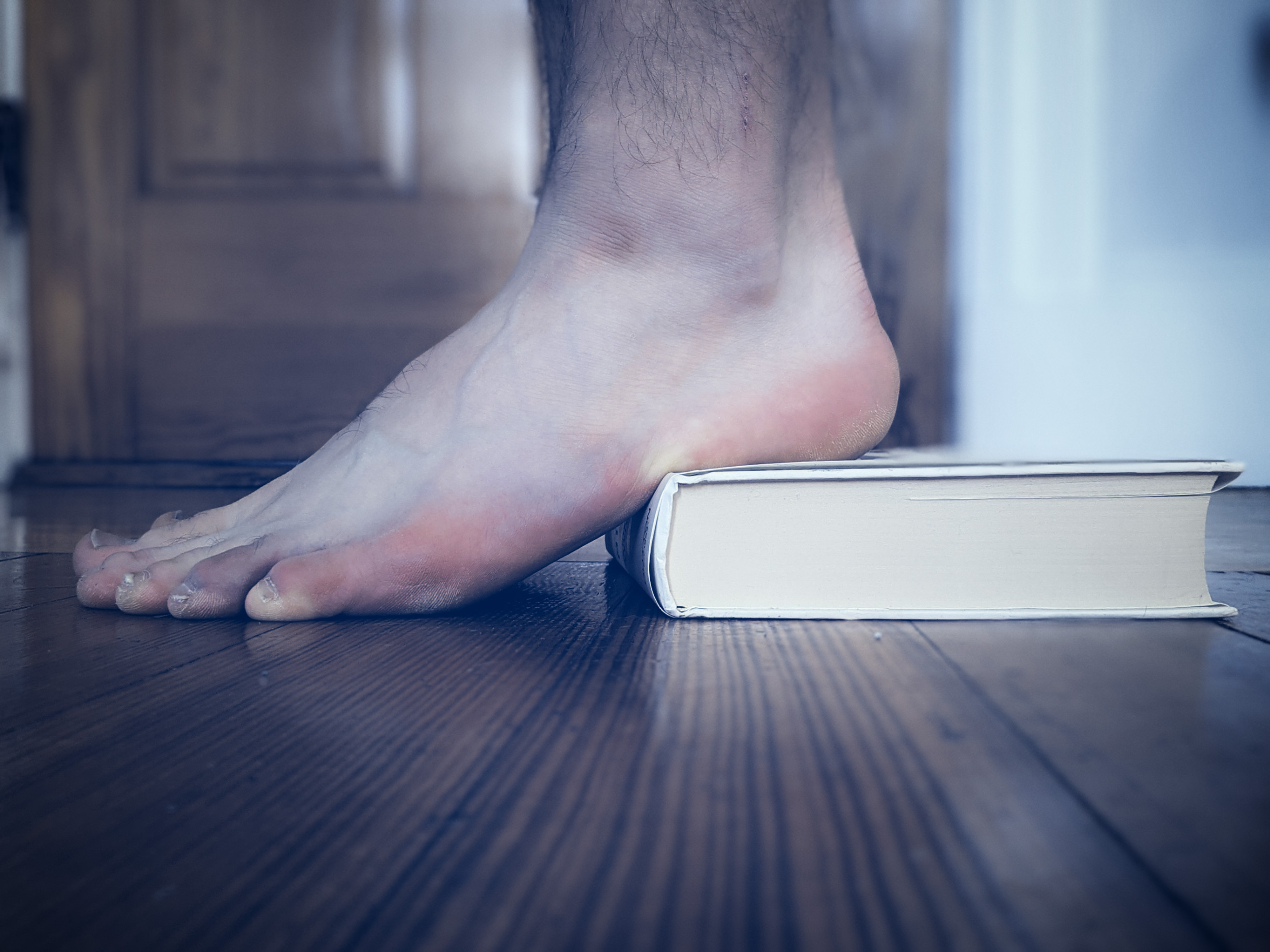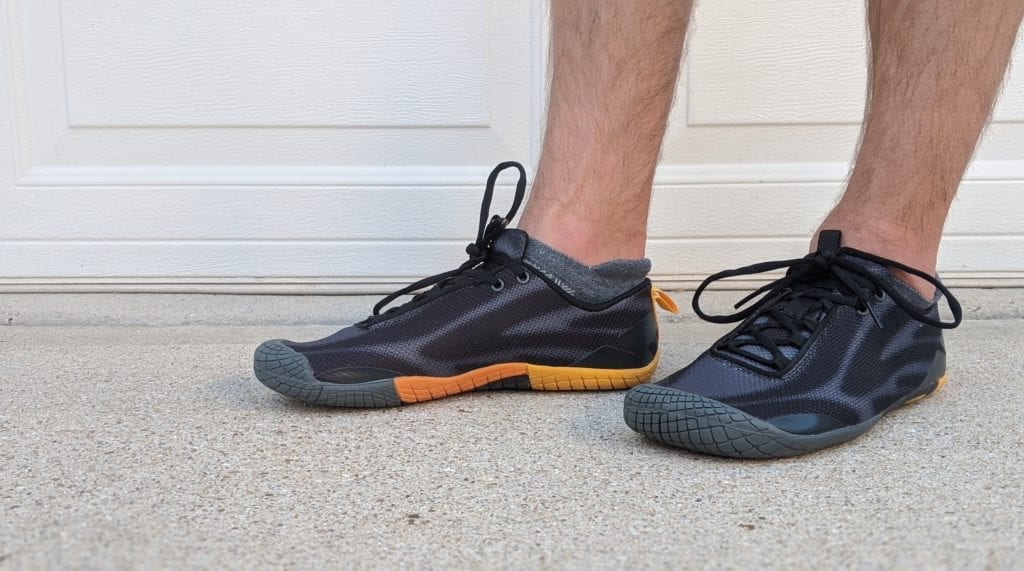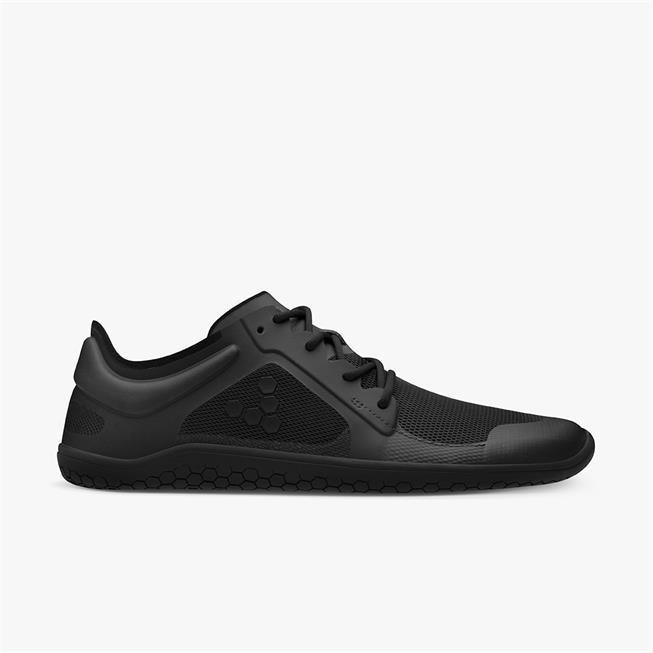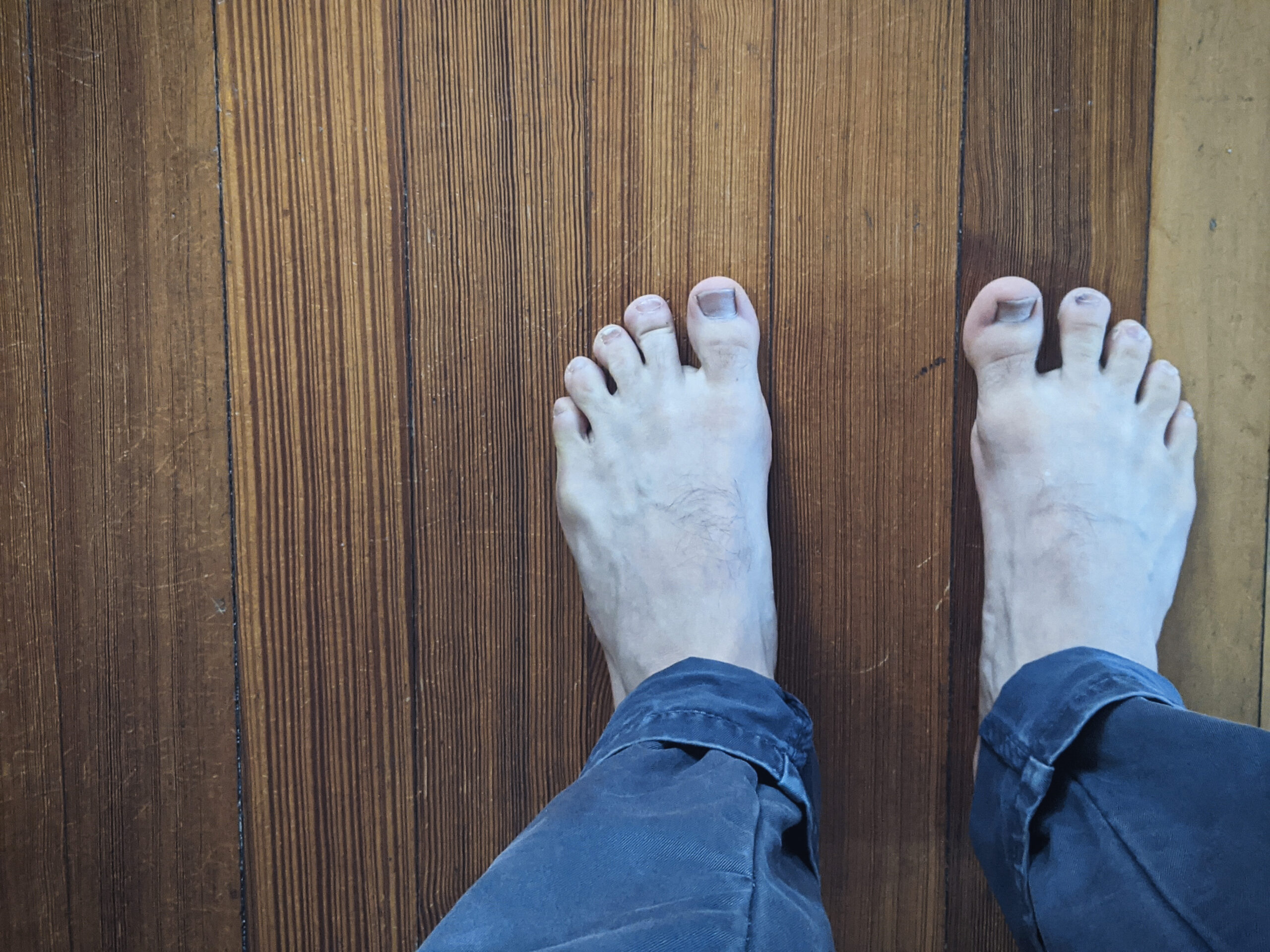Why do runners get injured so often?
50% of runners are injured at some point every year.
Could it be the food we eat? Maybe. Could it be setting unachievable goals? Possibly. Perhaps it’s the sedentary lifestyle we adopt for the 23 other hours of the day? Highly probable.
But I don’t want to focus on any of those points today. Instead, we’ll be diving into the world of modern shoe design and our body’s physiology. Sorry traditional shoe companies, you may not like this one. 🙂
Our feet are impressive pieces of engineering. With 26 bones in the foot and 100’s of muscles, tendons, and ligaments, you’d think that we’d be trying to optimize all the power and stability we could gain from these delicate extremities, right?
Wrong.
Instead, we’ve decided to wrap our feet in a mixture of squishy foam and rigid skeleton-like structures, strap these on our feet and use them as our stabilizers for most of the day.
What makes us think that evolution got it so wrong and we should upgrade our feet with modern running shoes?
On top of this, some shoe companies try to outclass evolution even further by convincing people to wear high-heels, so let’s look at that first.
The Drop
From the heel to the toe
If you’re running in what many would call a “traditional” running shoe, you’re most likely wearing a shoe with a high heel drop, which means that your heel is set higher than the ball of your foot and toes.
The likes of Asics, Nike, New Balance, Brooks, and Saucony all make varieties of “traditional” shoes. Some are setting your heels as much as 12mm higher than your forefoot. So why do they do this?
In the late 70’s running started becoming a popular pastime. But it wasn’t deemed the same as the sprint running seen in the Olympics.
Instead, the general public caught on to the trend of jogging.
People believed that jogging required a different running style that favored a heel strike rather than a mid or forefoot strike. And that’s not too surprising.
If you’re used to walking barefoot, you’ll know that at slower speeds, you do still tend to heel strike. But you’ll also notice that it’s no longer possible to continue to heel strike if you start to speed up.
To reduce the forces traveling through the body when the heel strikes, the running industry decided to stack the heel with lots of squishy material! And that tradition lives on to this day.
What’s wrong with a high heel?
Can a high heel real harm your mechanics?
Let’s perform a quick test.
Place a book or block under your heels and relax. Have you noticed your weight shift forward? Now, what’s happened to your hips? They’ve protruded forward to counter the weight shift, causing an arch in your lower back.

Now imagine how your arched back performs when you’re running. Your glutes deactivate, and your weak hamstrings take over the work, causing instability from here on out.
Alternatively, removing the book and bringing your heels back to earth will allow your hips to come back in line. Naturally, your posterior kinetic chain (lower back, glutes, and hamstrings) starts to fire efficiently (This will most likely not be true from the outset because of the adaptations your body has undergone to counter the offsets caused by modern shoes.)
What about motion control?
Are we really so unstable?
In 1977 Brooks started making motion control running shoes. The next innovation in an attempt to reduce running injuries by the shoe industry. When immobilizing the foot’s natural movement, it was apparent that some people were susceptible to pronation or supination. Two words you may have heard if you’ve ever bought your shoes from a running store.
Pronation references the ankles rolling in and the arch of the foot collapsing. Supination refers to the ankle rolling out, favoring the foot’s outer edge throughout the foot strike.
As you could imagine, rolling ankles can be pretty bad, but that’s not the common injury you see. The instabilities are usually felt further up the leg at the weakest point, which is usually the knee.
Knees can roll in, out, and be generally unstable. If you’ve ever suffered from any knee injury, knee-knocking, IT band issues, then you know how fragile the knee joint can be.
The shoe industry’s solution was to make a wide variety of shoes to solve all of these issues. The most common solution to solve pronation is to insert a “harder” foam wedge on the inside of your heel, making you favor the lateral side of your foot, stopping the pronation.
Over time these foams wear out and start causing instabilities in any variety of directions. That’s one reason why shoe companies advise you to change your shoes often!
If you make the wrong shoe choice, things can only worsen, which is why having a shoe fit is essential for traditional shoes.
The funny thing is, we had a solution all along, and it’s called the foot.
Let’s try another experiment.
Take your shoes and socks off.


With your feet hip-distance apart and keeping your hips in one position, lift the inside of your feet so you are only touching the floor with the outside of your feet. Do you notice how your ankles roll out? It probably feels a little unstable, right? Now roll onto the inside of your feet, and lift the outside. Do you feel your ankles rolling in?
Now, try the same thing, but squeeze all your toes at the same time. Do you notice that it’s harder to roll your ankles?
Amazingly, by squeezing your toes you engage your whole foot, stabilizing your ankles and therefore reducing stress through your whole body. But as soon as you wrap them in rigid shoes, your foot’s ability to do this is significantly reduced.
Putting pillows on our feet
Super squishy, but equally stable?
You may have gotten to this point and decided that those Altra or Hoka shoes you were eyeing are the way to go. And to be honest, these brands are much better than the traditional shoe solutions out there, but they still have their downsides.
Altra and Hoka One One have gone the direction of adding LOTS of cushioning underfoot to lessen your footstrike’s impact.
Reducing the impact and taking the stress away from your joints may sound like a good idea, but we’ve got to imagine what this encourages. We’re back to the realm of the potential heel strike, or possibly overstriding, which shifts the impact onto your muscles and joints. Your joints and muscles are not made to take on heavy loads.
Alternatively, having the ability to feel the ground and the full impact of your stride, you’re forced to use your feet, knees, legs, and core to lessen the impact—the natural way.
As you may have guessed, I’m a big fan of minimal shoes. And after reading all the above, I hope you understand why.
That’s not to say that everyone can jump into minimal shoes and run a 5km. It’s taken me years to transition away from traditional shoes.
Most of my current rotation of running shoes don’t have cushions in them. But I still own a pair of Altras. So I do still think that some traditional shoes have their place in your shoe selection.
I personally find that the occasional run in Altras can be a welcome change giving my feet a slight rest.
I would apply the same thinking to a pair of race shoes – like those fancy carbon plated shoes we’ve been seeing lately. If they allow you to run your PR, I’m not going to try and deny you the opportunity.
It’s all about understanding the trade-offs and possible consequences of your shoe choice.
Just take your shoes off and walk around.
If you’re inside, allow your feet the freedom to touch the floor. Get used to the sensory feeling from the soles of your feet.
Next, progress into a pair of minimal shoes or sandals and go for a short, slow walk. Again pay attention to the feeling and sensations from your soles. Notice how your legs and hips feel different.
Lastly, try a short jog. And when I say short, I mean short! 100m, 200m. That’s it. It’s all about the slow progression. Get used to the feeling and the mechanics of your barefeet and allow your physiology to relearn natural movement.
Over months, and years, you’ll find that you can start choosing minimal shoes for your training runs, and eventually every run. If you don’t make this progression slowly, your feet, weakened by traditional shoes, will not withstand the new movement and the additional force that minimal footwear can cause. This might even cause issues up and down your body – not just in your feet. But once you start to reactivate your long-forgotten superweapon (feet), you’ll be thankful you’ve made the move back toward your naturally springy step!
The minimal shoes I trust.

Xero Shoes
The best value for money barefoot brand in the US. Great options for trail shoes, road shoes and casual.

Cheap Amazon shoes
If you’re wanting to dip your toe in barefoot waters, trying out a cheap unbranded pair could be a great option.

Vivobarefoot
The high-end market of barefoot shoes. They feel great, look good, perform great. What you expect at the price.
This post was inspired by the excellent book “Run for your life.” The author, Mark Cucuzzella breaks down the foot’s mechanics in great detail and explains what happens when we immobilize one of our greatest assets.
If you’re somewhat inspired to learn more on the subject, I can’t recommend the book enough. There are some real gems in there.
